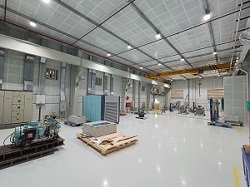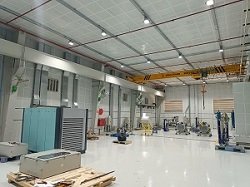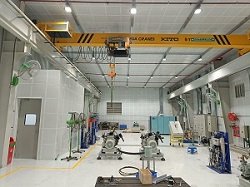Acoustic Treatment For Power Plant
Acoustic Treatment for Power Plants are essential for meeting the energy demands of modern society. However, they often come with a significant challenge - noise. The noise generated by power plants can have adverse effects on both the environment and human health.
The Acoustic Challenge
Power plants, whether they rely on fossil fuels or renewable energy sources, are complex industrial facilities housing a multitude of equipment, including turbines, generators, pumps, and cooling systems. The operation of these machines produces noise levels that can be detrimental in several ways:
Health and Safety: Prolonged exposure to high noise levels in power plants can lead to hearing damage, stress, and related health issues for plant workers.
Environmental Impact: Noise pollution from power plants can disrupt local ecosystems and harm wildlife. It can also affect the quality of life for nearby communities.
Regulatory Compliance: Governments worldwide have established strict noise regulations for industrial facilities, including power plants. Non-compliance can result in fines and legal consequences.
Operational Efficiency: Excessive noise can hinder effective communication among plant personnel and impact their ability to monitor and control processes.
Public Relations: Noise complaints from neighboring communities can damage the reputation of power plant operators.
Acoustic Treatment Solutions
Acoustic treatment for power plants involves a range of strategies and technologies designed to mitigate noise emissions and their associated challenges. Some key acoustic treatment solutions include:
Sound Barriers: Installing sound barriers around noisy equipment can help contain and reduce noise emissions. These barriers can be made of specialized acoustic materials.
Acoustic Insulation: Applying acoustic insulation materials to equipment and structures can reduce noise propagation by absorbing or blocking sound.
Silencers and Dampers: Silencers and dampers are used to attenuate noise from exhaust systems, ventilation, and cooling systems within power plants.
Vibration Isolation: Vibration isolation systems can minimize structural-borne noise by isolating machinery from the surrounding structures.
Engineering and Design: Consultation with acoustic experts and engineers is crucial to assess noise levels, design custom solutions, and ensure compliance with local noise regulations.
Benefits of Acoustic Treatment
Implementing acoustic treatment in power plants yields numerous benefits:
Improved Work Environment: Reduced noise levels enhance the health and safety of plant workers, leading to higher morale and productivity.
Regulatory Compliance: Acoustic treatment helps power plants meet or exceed noise regulations, reducing the risk of fines and legal issues.
Environmental Responsibility: Lower noise emissions contribute to reduced environmental impact, benefiting local communities and ecosystems.
Enhanced Reputation: Demonstrating a commitment to noise control and sustainability can enhance a power plant's reputation and foster positive community relations.
Acoustic treatment for power plants is not just a matter of compliance; it is a critical step towards creating more efficient and sustainable energy facilities. By addressing noise pollution, power plants can improve working conditions, protect the environment, and strengthen their relationships with neighboring communities. As the energy sector continues to evolve, acoustic treatment will remain a crucial element in its pursuit of a cleaner, quieter, and more responsible future.





